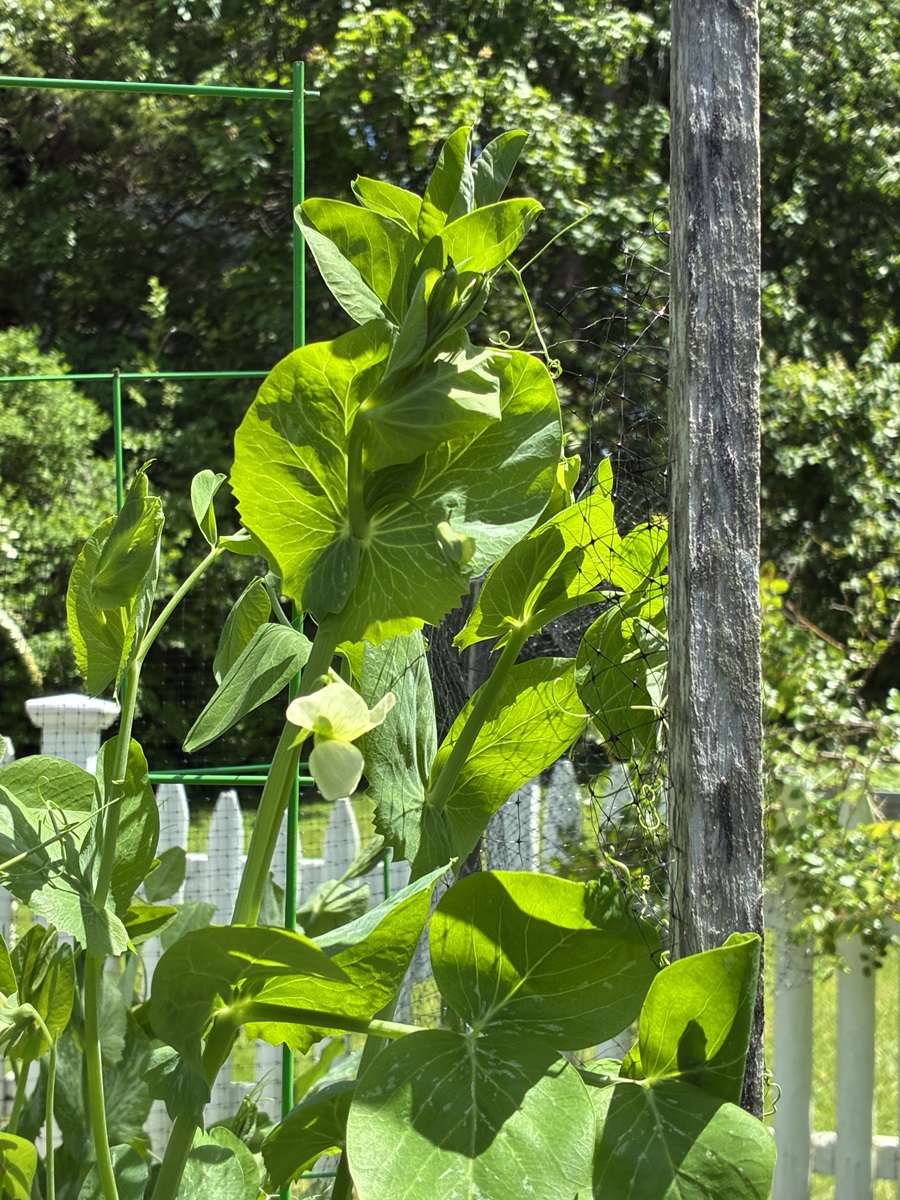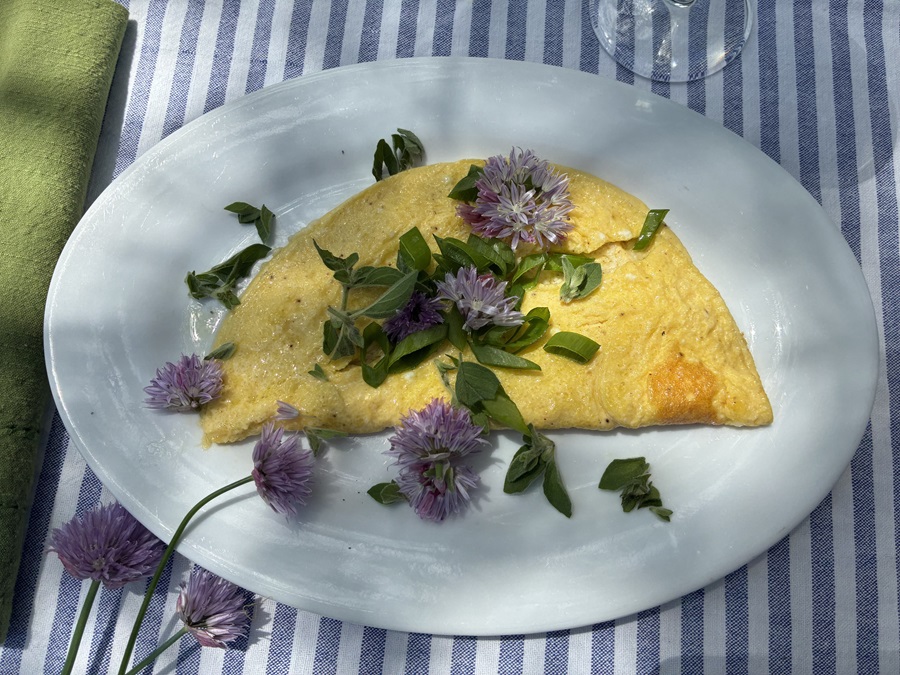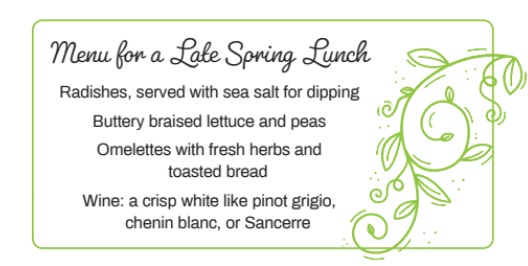It won’t be long now. Most anyone who keeps a vegetable garden is waiting and watching for the first peas, that fresh, green taste of springtime that means the weather has truly turned.
How protected your plot is and how early you put your peas in are also important factors. Some years I plant in mid-March, which is risky, and other years not until April. Even so, planting in early April this year meant I had to rush outside on a couple of frosty nights and blanket the bed with newspapers.
Peas are unpromising straight out of the packet. But when those shriveled, yellow-brown seeds sprout, it’s jubilation. I check them daily as they inch higher, and I nibble a few of the tender shoots. “Doesn’t look like the peas are going anywhere this year,” Hugo announced a few weeks ago, as he does every year after the usual slow start.

Then, suddenly, the vines are a foot tall, then two, and the plants flower, which is where we are now. Once the tiny pods appear, more samples are consumed. And then, with the peas presenting the crisp essence of the season right at mouth level, it will be time. Half get eaten by us standing there in the little pea patch, but with two varieties of sugar snaps there are always plenty for salads, stir-fries, and the ultimate springtime treat: peas and lettuce.
The pairing is a longstanding French tradition — one I never could have imagined, being a good follower of rules but truthfully not a great innovator in the kitchen.

Peas and lettuce, cooked? you ask. Yes. I first came across this wonderful combination while working on my cookbook, The Artist’s Table (HarperCollins, 1995), which brought together great works of art with menus and recipes inspired by the art. One painting especially enticed me: Camille Pissarro’s lush The Artist’s Garden at Eragny, painted in 1895. He captured a springtime garden with rippling sunlight, the wind high in surrounding trees, and a woman bending over a row of greens, maybe gathering some in her apron. I liked to imagine what she might cook and browsing French cookbooks discovered lettuce and peas. I suggested this to the chef I had invited to create a menu and recipes for the painting. She chose instead a ragout for a beguiling springtime lunch that included radishes with sea salt, eggs with herbs, and finally a yeasted cake topped with a brown sugar crust.
I’ve never gotten around to the cake, but a lunch with radishes, omelettes, and my addition of lettuce and peas has become a seasonal ritual around here on a balmy, breezy weekend afternoon just before summer arrives.
Hugo invariably reminds me about the yeasted cake and wonders if I will make it, too.

I hesitate, because when it came to testing the recipes for The Artist’s Table, the brown sugar caught fire in the oven, leaving me the task of diplomatically suggesting to the celebrated chef involved that she modify the technique, the oven temperature, or preferably both.
The lettuce and peas, however, lightly cooked in butter with a sprinkle of sea salt at the end, is failsafe. You can use sugar snap peas or shelled sweet peas along with a soft lettuce. I suggest skipping the ham, shallot, chicken broth, wine, cornstarch, and other ingredients found in many recipes, as well as the long braising time. I’d rather let the essence of the greens shine. Optimally, I want the peas just done, not crunchy but not soft, either, and the lettuce just gently wilted so it still looks like lettuce.
Wash the radishes, leaving the green stems on, and place them on a plate with a small dish of sea salt. Open the chilled wine. The omelettes can be very simple. Make them with sautéed garlic scapes, if you’ve just pruned those from the stems, or lots of whatever minced herbs you have, some blended with the eggs before cooking, others saved for garnishing. Serve the omelettes on warmed plates along with toasted bread or slices of a bakery-fresh baguette.
Hugo is good with omelettes, which gives me time to savor the day, whether it’s the two of us or with friends. I like to serve courses separately, to give each its due and to create a sense of all the time in the world, even if it’s only an hour.
As we wait and plan, I say to Hugo, “How about that cake? Do you want to make it this year?” His answer: “Maybe next time.”
LETTUCE AND PEAS
Snap peas, shelled fresh peas, or a combination, about a handful per person
Bibb, Boston, or other tender lettuces, about a half small head per person
Butter
Sea salt
- Wash the lettuce and shell the peas.
- Add about an eighth of an inch of water to a skillet along with a spoonful of butter and bring to a simmer. Add the peas and cook until they are almost done: cook snap peas, uncovered to protect their color, for about a minute; cook shelled peas, covered, for about three minutes or more, depending how young and tender they are.
- Add the lettuce leaves or whole small lettuces and stir, cooking the leaves for a few seconds, the whole lettuces for a few minutes — just until the lettuce wilts. Season the vegetables with salt and pepper and serve. This dish is best eaten immediately.



